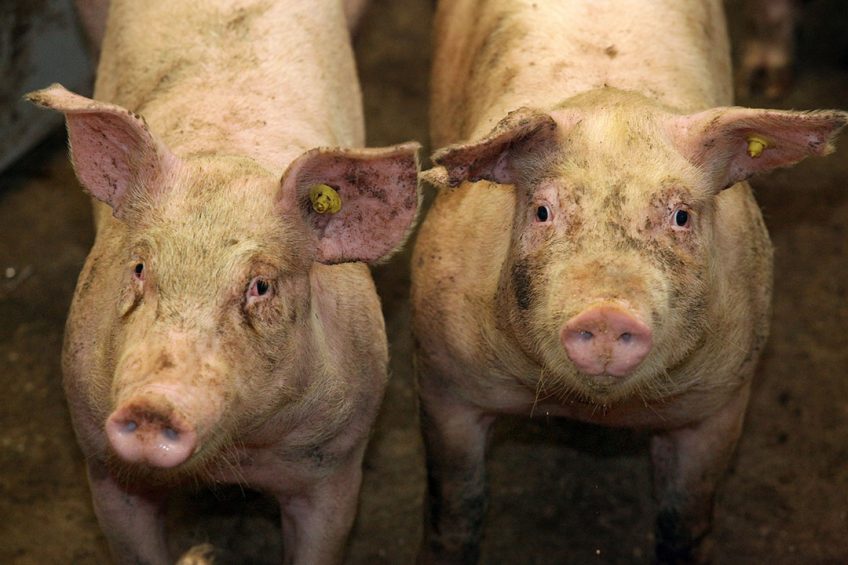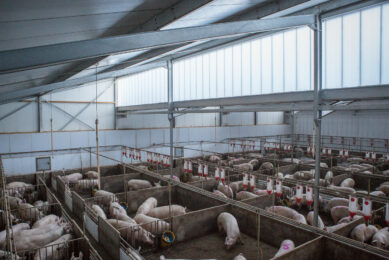Airbag ventilation in 10 easy steps

Pig management expert John Gadd is a believer in artificially controlled natural ventilation (ACNV) systems. Unfortunately things often go wrong when producers try to create these types of solutions, he says. Here’s how to do it properly…
ACNV is a halfway-house between fully natural ventilation and forced (fan) ventilation. There are 2 reasons for this article…
Because it is becoming more popular due to its low cost and flexibility, especially where large areas have to be ventilated, when sufficient cooling or warming air can be placed just where it is most effective, and when needed altered quickly and simply as conditions change.
And because too many simple mistakes are made, needing the attention of specialists in piggery problems like myself. An airbag system is easy to make on the farm providing the careful measurements below are followed. When attending to such complaints I find one or more of the essential rules are not being obeyed. These are…
The 10 steps for successful design
Use any fan suitable for the weight of pigs to be ventilated in the climatic conditions expected. Now how to create a duct?
 Use heavy gauge film no thinner than 500 gauge. Thinner and it will twist or sag.
Use heavy gauge film no thinner than 500 gauge. Thinner and it will twist or sag. Make the initial duct diameter match the fan diameter to avoid either restricting the fans output or causing the duct to vibrate and flap, thus interfering with positional airflow.
Make the initial duct diameter match the fan diameter to avoid either restricting the fans output or causing the duct to vibrate and flap, thus interfering with positional airflow.
 Taper the duct carefully. This ensures that the discharge air speed is the same all down the duct and the exit holes can be same size and spaced uniformly. Lay the duct flat, and the ratios of widths at wide and narrow ends should be…
Taper the duct carefully. This ensures that the discharge air speed is the same all down the duct and the exit holes can be same size and spaced uniformly. Lay the duct flat, and the ratios of widths at wide and narrow ends should be…
- 3:1 for ducts up to 25 m;
- 2.1 for ducts 25 to 50 m;
- 1.5:1 for ducts 50 to 70 m and no taper above 70 m.

Hole size. Diameters greater than 40mm give directional jets and 30mm or less tend to give a diffusing effect.
 Select the direction required for the jets – upper third, middle, or lower third of the duct circumference.
Select the direction required for the jets – upper third, middle, or lower third of the duct circumference.Read more expert opinions on various relevant pig topics
 Also the number of holes required. The total area of holes equal to 1.8 times the cross-sectional area of the fan (best to get someone familiar with simple geometry to get this constant right).
Also the number of holes required. The total area of holes equal to 1.8 times the cross-sectional area of the fan (best to get someone familiar with simple geometry to get this constant right).
 Cut the holes as ‘D’ shapes, the curved cut ‘downstream’. The curved flaps ensure the air flows out laterally and prevents any backward flow.
Cut the holes as ‘D’ shapes, the curved cut ‘downstream’. The curved flaps ensure the air flows out laterally and prevents any backward flow.
 Fit a metal air straightener with a simple cross of internal plates between the fan and the duct of the same diameter. A length of 1.5 times the diameter of the fan is sufficient to stop the air spinning in the duct and twisting it due to torque.
Fit a metal air straightener with a simple cross of internal plates between the fan and the duct of the same diameter. A length of 1.5 times the diameter of the fan is sufficient to stop the air spinning in the duct and twisting it due to torque.
 Suspend the duct. Along the upper line of the duct taper, make a small tuck, strengthen with duck tape or a thin batten, and staple at 40mm intervals. This provides strength and stability to suspend the duct over, or to one side of the pigs according to preference. Seal the end of the duct. Hang the duct at 1m intervals in as straight a line as possible down the length of the piggery.
Suspend the duct. Along the upper line of the duct taper, make a small tuck, strengthen with duck tape or a thin batten, and staple at 40mm intervals. This provides strength and stability to suspend the duct over, or to one side of the pigs according to preference. Seal the end of the duct. Hang the duct at 1m intervals in as straight a line as possible down the length of the piggery.
 Wide areas such as dry sow courts/large nursery groups of post weaners/several rows of grow-out pens can easily be provided with several fans and ducts running side by side down the building.
Wide areas such as dry sow courts/large nursery groups of post weaners/several rows of grow-out pens can easily be provided with several fans and ducts running side by side down the building.
The airbag/duct principle is especially useful in hot weather conditions and with global warming may become even more popular as it is flexible enough to deposit a flow of air directly over the pigs when needed.
In the previous weblog, John Gadd discussed 7 ventilation rules
The recirculation principle
Is exactly the same as the above except that the fan is enclosed in a box which recirculates 80% of the air in colder conditions thus saving on energy costs. An engineer is required to design and set it up. I am nervous of the principle as over-recirculation of the same air could aggravate lung diseases and don’t recommend it for this reason, although I have seen several units working well over time.











